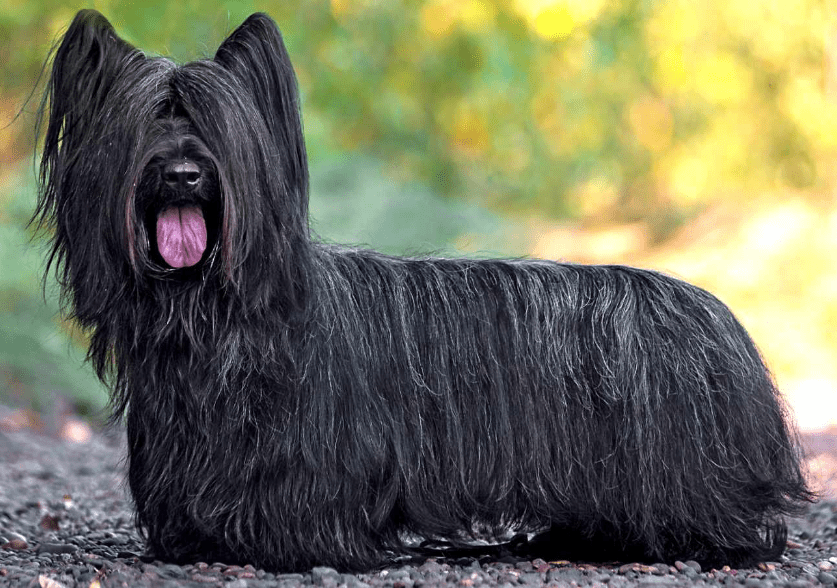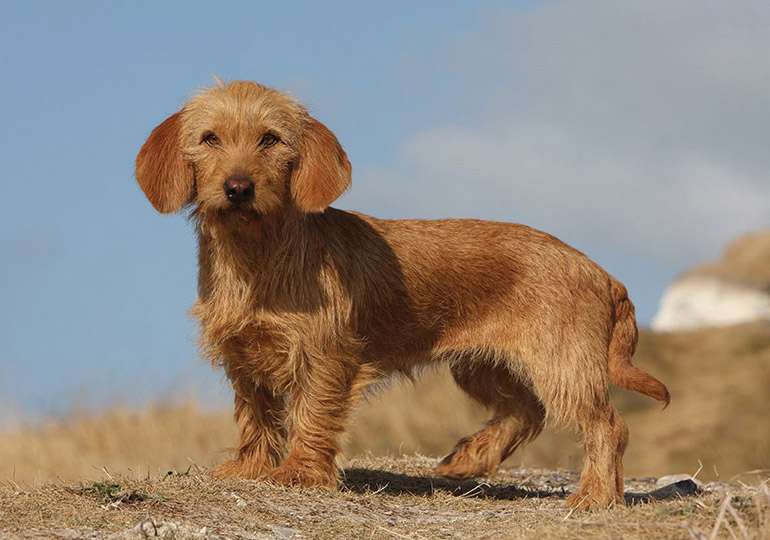
Description
With either upright or lowered ears, short legs, a long body, facial hair, and a lot of fur in its long double coat, the Skye Terrier is a medium-sized terrier breed from Scotland. These canines have a regal air about them, and it’s not only because Mary Queen of Scots preferred them.
Origin/History
The Isle of Skye in Scotland is where the Skye Terrier was first discovered, earning its name. In the past, Skye Terriers were regarded for their ability to help farmers guard their cattle from local threats like badgers and otters. Skye is one of the northernmost Inner Hebrides islands in Scotland. Skye Terriers have been mentioned for ages, especially in Johannes Caius’s book Of English Dogges from the 16th century.
Skye Terriers were admired in more aristocratic settings in addition to their reputation as athletic hunters of neighbourhood predators—a quality shared by their terrier friends. The breed enjoyed enormous popularity among Victorian England’s aristocracy, mixing not just with Mary Queen of Scots but also with Queen Victoria.
Skye Terriers, in contrast to many other foreign-born breeds, have a relatively lengthy history in the United States. Because they were featured in Vero Shaw’s book The Illustrated Book of the Dog, which sparked interest in these unusual canines around the world, the breed was first acknowledged by the American Kennel Club in 1887. But because of the decline in their popularity, they are now a rare and less well-known breed. However, these regal-appearing dogs have kept their dignity, and Skye Terriers can occasionally be seen competing.
Temperament
The Skye Terrier is notorious for being distant towards anyone outside of its immediate family, yet being devoted and affectionate with them. That shouldn’t be mistaken for shyness, though; Skye Terriers are self-assured and frequently exhibit a slightly self-absorbed temperament.

Care
The Skye Terrier is generally low-maintenance in terms of exercise, but because of their independence and long hair, they need a lot of training and grooming attention. Owners should be ready for continual obedience training and frequent brushings to maintain their coats in good condition.
Exercise
Despite their athleticism, Skye Terriers actually lack energy and don’t need to engage in any kind of strenuous exercise to stay healthy. Generally speaking, one or two quick walks per day—about 30 minutes total—will be sufficient, providing they are combined with additional one-on-one fun periods with their humans. The Skye Terrier breed does loves to play, and some of them are also very good at dog sports like agility. They tend to dig like other terriers, thus it’s beneficial for owners to give a sandbox in the yard so that these dogs can stay active while acting on their natural impulses.
Grooming
When it comes to grooming, that plush feathery coat does require some maintenance. This entails routine brushing and combing to prevent tangles and matting, which, if they do develop, should be very softly combed out with detangling spray. The standard grooming routines including regular tooth brushing, nail trimming, and ear cleaning should also be maintained by owners.
According to your veterinarian’s advice, give a Skye Terrier’s ears special attention when cleaning them because the breed is more susceptible to ear infections and wax accumulation because of the amount of fur that accumulates around the ears. Baths should be given on a regular schedule (about once a month; less in the winter), but be careful not to scrub too hard since this may cause mats to develop in the fur. Regular baths should be given (approximately once a month; less frequently in the winter), but you should take care not to scrub too vigorously as this could lead to the development of mats in the fur.
Training
Skye Terriers are somewhat resistant to training, which may be a result of their regal heritage mixed with terrier characteristics. They are friendly yet stubborn, and while they can learn acceptable behaviors through positive training methods, they don’t always respond well to more rigorous instruction (but it’s always worth a shot). When puppies are around eight weeks old, the basics should start being taught. When training, only ever use positive reinforcement. Negative reinforcement is neither a legitimate training method for dogs nor one that works effectively with these reticent animals.
Diet and Nutrition
The nutritional requirements of Skye Terriers are similar to those of the majority of dogs, and this breed thrives on a high-quality food rich in protein. If your Skye Terrier becomes food allergic or is a senior, you may need to accommodate certain nutritional requirements. Remember that terriers respond strongly to positive reinforcement, so feel free to offer your dog lots of nutritious goodies. However, if you see that your dog is acquiring too much weight, you should consult your veterinarian. Based on the age, weight, and amount of activity of your particular dog, your veterinarian can assist you in deciding on a healthy meal and portion plan.
Table





